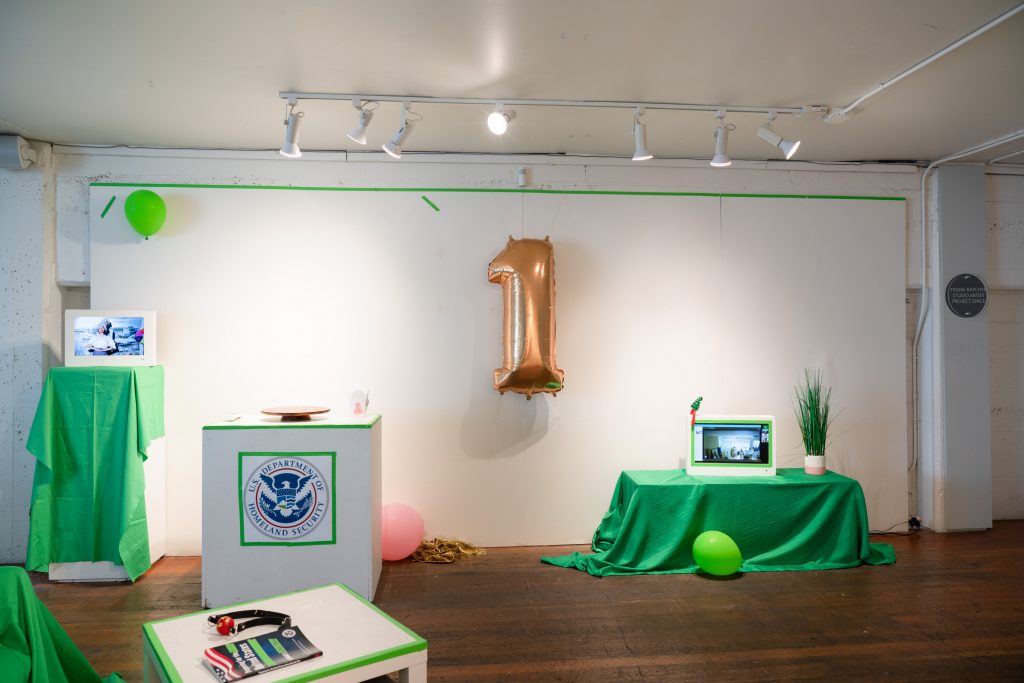The Frank-Ratchye Project Space presents a new body of work by Root Division Studio Artist, Jasmine (Mengjiao) Zhang. This multimedia installation features video, photography, interactive sculptures, and documentation of the artist’s performative marriage to the United States. Read more below to see Education Fellow Rebecca Sexton’s interview with Zhang about her experience developing this new body of work.
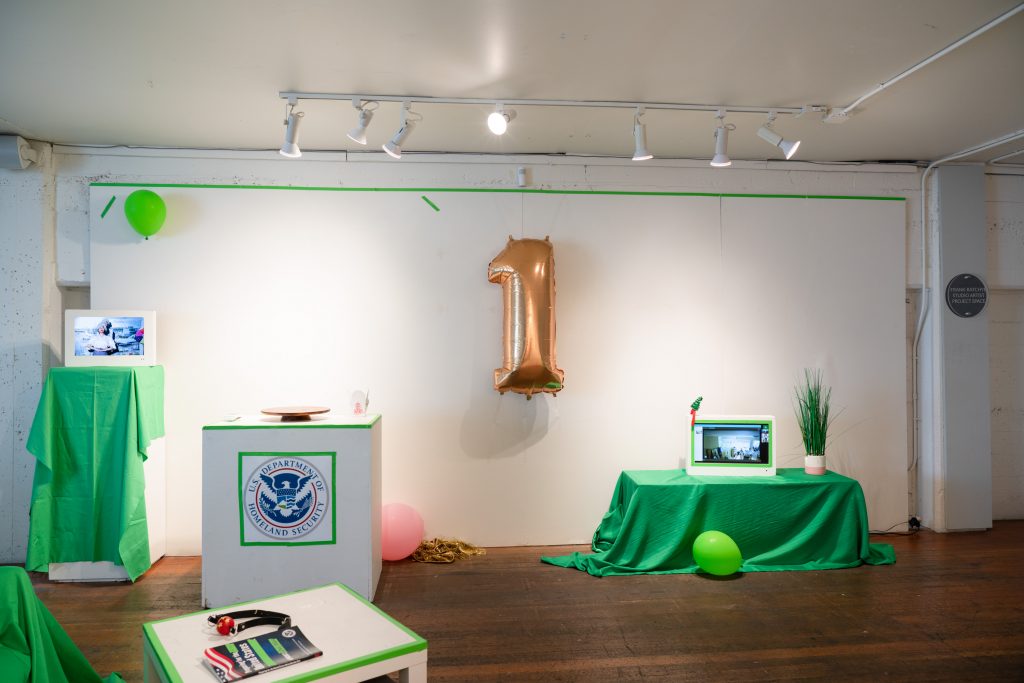
For The Better Future: An Anniversary Party Between Mengjiao and the U.S. (installation detail), 2021, Variable dimensions
Rebecca Sexton: Can you walk us through what your installation is in the FRPS? I would love to hear how you filled the space and what led to the choices you made in the installation?
Mengjiao Zhang: At the beginning, I had this idea of trying to figure out a show to present the performance piece I did last year in April. This was a performance I did on Zoom where I married myself to the United States. Since then, I have spent a lot of time thinking about how I should present it. There are a couple different aspects to that performance: there’s the recorded Zoom meeting, and there’s the actual certificate that I signed. I think in terms of my work recently, it is more action-based now than ever before. It’s a thing that has happened, but how do I present that to people without just telling them what I did? This installation is sort of a response to including the art audiences in the action.
Earlier this year, I talked to Michelle [Mansour] about the chance that I could have a show. From the beginning, she suggested that I set up the space like a living room as a place to celebrate. From there, I started working on finding furniture to really create a sort of a living room. Then, I started thinking about the possibility of including the green screen color. Recently, I’ve been more and more interested in the concept of the green screen, especially the simultaneous invisibility and visibility that this color implies.
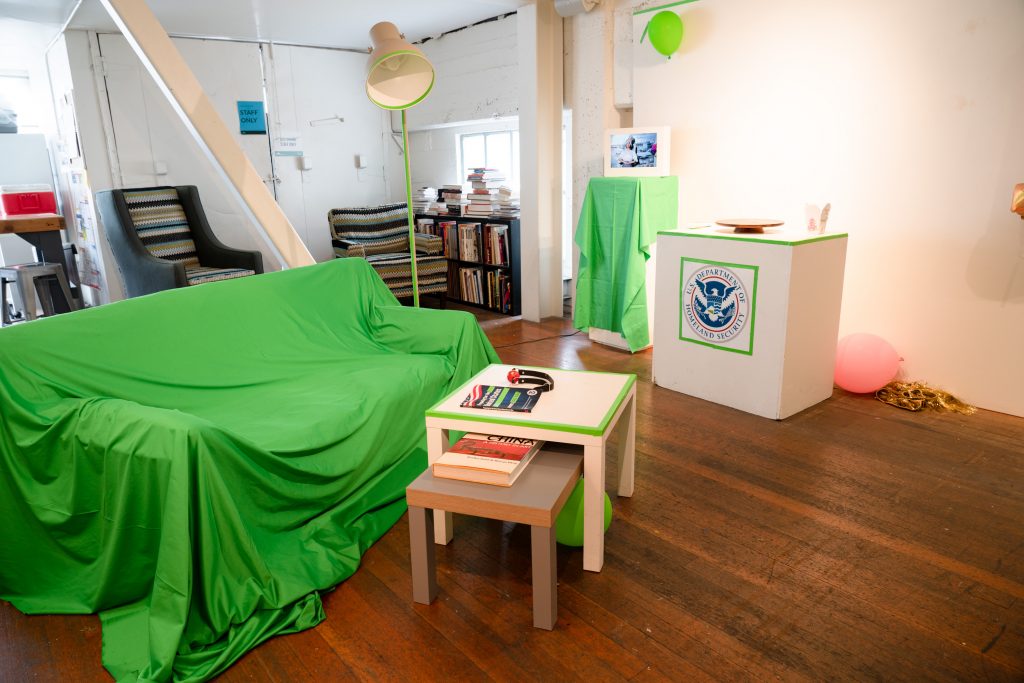
American Dream Living Room Installation, 2021, Lovers chair, coffee table, champagne tower, Variable dimensions
Since I wanted to turn the whole installation into a one year anniversary celebration party, I decided to have a champagne tower and a cake. I made a photograph of me dressing up as a bride—a very constructed photograph. And I even have a little lamp that I think adds to the installation and other furniture. I put green screen fabric on that or was taping the edge using an artistic tape that is similar to the green screen color—to highlight the furniture, to give them the thing between real and the non-existent. I also ended up using the green screen color artistic tape to tape a square onto the wall and incorporated various different kinds of balloons like pink and tasseled. It looks pretty legit as a celebration, or a bit over the top celebration and installation.
For the cake, I based it off of this Wheel of Fortune Immigration System object that I made. In this wheel, people interact with it to find out how they would end up within the immigration system lottery. People could spin the wheel on the cake, just like they could with the actual wheel. I really like letting people interact with the work. I hate the idea that art is expensive and unapproachable. I like being able to share things, so I made an extreme of that by having a share of the cake. All of the people that came to my show had the chance to experience the immigration system as an immigrant where you are waiting for what visa you’re going to get.
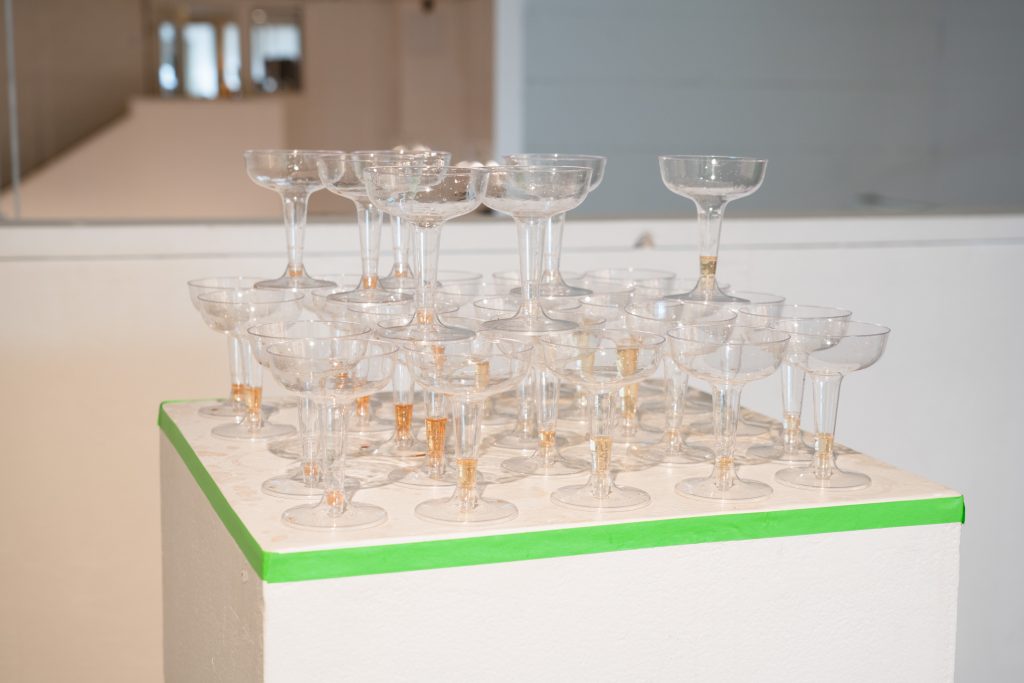
Rebecca Sexton: I’ve been thinking a lot about your practice in general, and especially about how photography used to play such a central role, which you brought up earlier. It seems that photography isn’t a central object in this installation; there are aspects of it for sure, but it’s not the main idea. It’s just a way to express an idea. However, there are also these other surprising mediums, such as the cake, which is really interesting to me. How are you thinking about material and medium in this installation, specifically?
Mengjiao Zhang: I’m more thinking about the living room because it’s a living installation. You’re gonna have a photo hanging there usually of a couple. That’s what I think in terms of medium.
I used to solely work on photography and I feel like photography, especially in terms of the art world and the art market, is really the essence of something. I think the power of photography is that it can circulate, be shared, and duplicated. It can even manipulate reality—how people perceive the reality. During the time that I fully dove into the world of photography, I realized that’s probably not the medium that I want to be attached to.
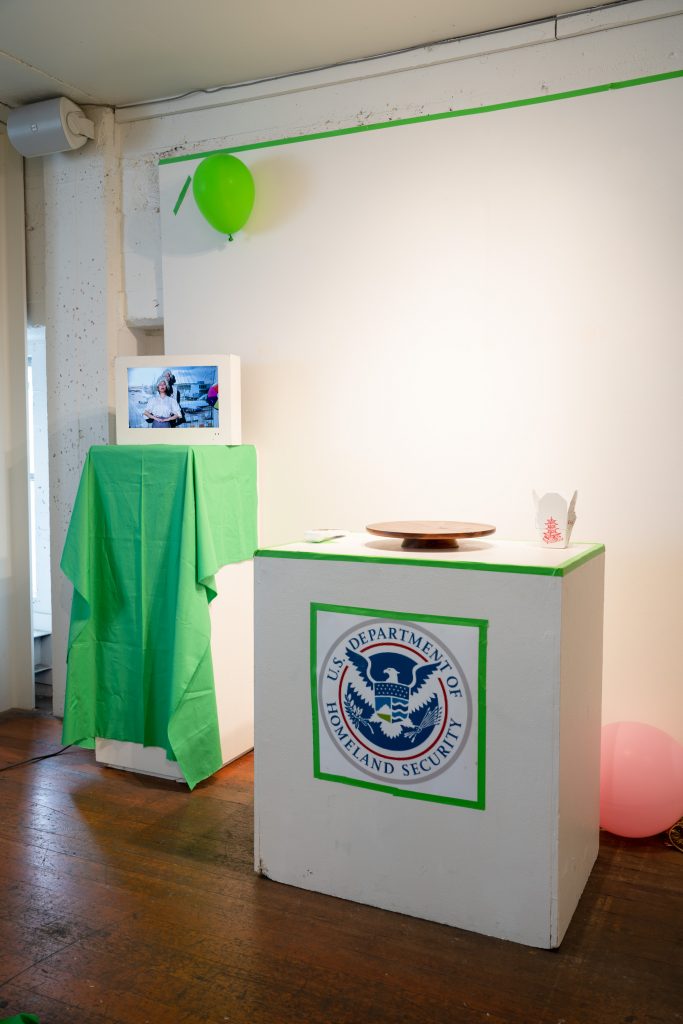
Rebecca Sexton: What does it mean for you to be in a relationship or a marriage with the United States? That’s what the show is titled; you have the marriage certificate and the wedding portrait. But I was wondering if you could talk more about what that actually means for you as an artist to be in a relationship and how you think about this relationship.
Mengjiao Zhang: I think this whole body of work it’s really layered. When international students first travel to the United States, they have two suitcases both weighing 50 pounds and they have their paperwork. It’s very similar to when you’re married out. It’s a temporary marriage now. It’s about the hope that your parents have for you, but you also have this concrete paperwork that’s in your hands.
I did the marriage ceremony performance very intuitively. This year I realized how similar the whole experience is to immigration. I mean not only for international students or getting a job here, but that these sort of relationships are very similar in terms of having a power dynamic with the US. I am thinking of another interpretation to this marriage that I am just validating. It’s so similar I cannot tell any difference. I think there’s a lot of sex trafficking. I have to think about the background of very young Chinese ladies they sex trafficked at the beginning of last century. It’s actually dropping different sorts of layers and having different ways of interpretation.
This one year anniversary is time to affirm my love towards my husband, which is continuing to stay here for another year. Maybe another way of thinking is continuing this body of work until I get my Green Card. That’s a whole different relationship that you have, but you’re still not a citizen.
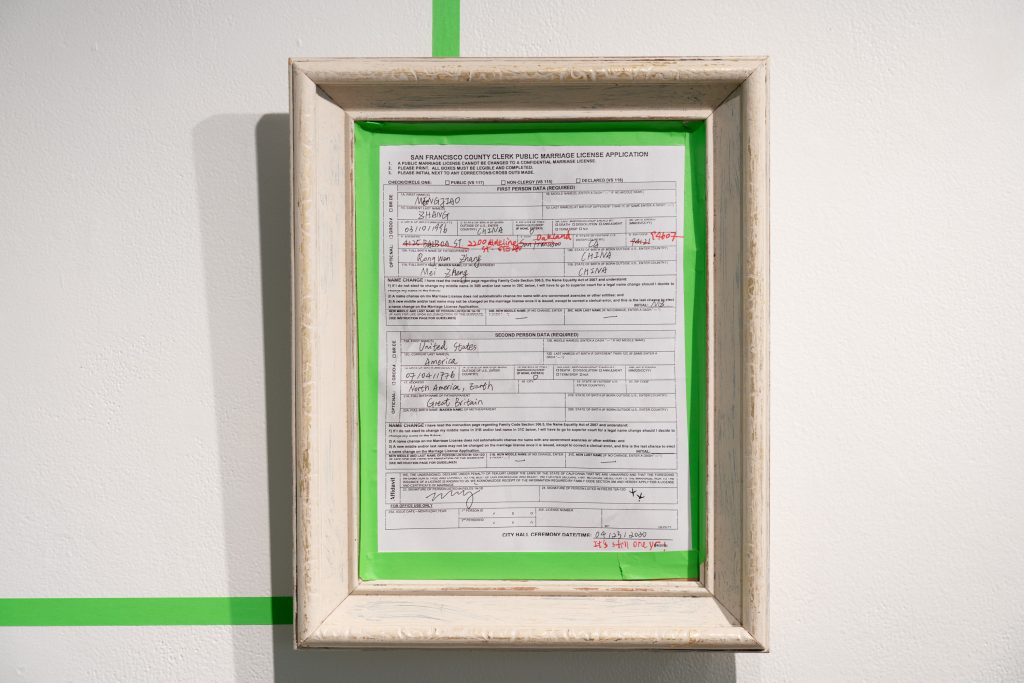
Rebecca Sexton: That makes sense. I don’t have any other questions, but I just wanted to leave space, if you have other things that you wanted to talk about or share that we didn’t dive into related to this project.
Mengjiao Zhang: At the beginning of thinking about this exhibition, it was just about using the entire space for the installation. Now, after the opening, I realized that actually this space is a white cube of a gallery.
Moving forward, I want to share the cake. I don’t want it only for our audiences, I want to bring it out. I want to bring it on the street to more kids. I don’t like to confuse people, but I want to let people think they’ll be confused at first, and then see what happens past that confusion. That’s sort of my way of navigating what I’m doing but yes. I feel like our work should be pushing towards a direction that goes beyond the white cube. I mean, when I was in Grad school, I never realized that.

